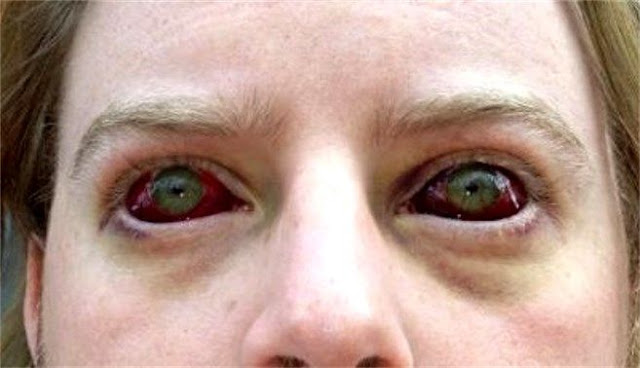

Yawning, chewing gum, or sucking on hard candy can help, especially just before take-off and during descent. The simplest way to help clear your ears-particularly when flying-is to swallow. Also, any situation in which rapid altitude or pressure changes occur, such as air travel, riding in an elevator, diving to the bottom of a swimming pool, or scuba diving, can affect proper function of the eustachian tube. A stuffy nose leads to stuffy ears because the swollen membranes in the nose can extend into the eustachian tube and block it. The most common cause of eustachian tube blockage is the common cold, but sinus infections and nasal allergies are also usual suspects. The eustachian tube is a membrane-lined tube about the width of a pencil lead that connects the back of the nose with the middle ear and helps maintain balanced air pressure on both sides of the eardrum. The common cold, sinus infections, and nasal allergies can also interfere because swollen membranes in the nose can extend into the eustachian tube and block it (see “What Causes Ear Barotrauma?” below). This stretches the eardrum and causes pain and occasionally fluid. Ear barotrauma occurs when the eustachian tube in your middle ear is blocked due to altitude or pressure changes, air cannot be equalized, and a vacuum occurs. While they are usually minor annoyances, sometimes they can cause significant symptoms. The slit will heal quickly, and may not be a permanent solution.Ear problems are one of the most common medical complaints of airplane travelers and divers. This can also remove any fluid that’s present in the middle ear. The second surgical option involves a tiny slit being made into the eardrum to better allow pressure to equalize. The ear tube will typically remain in place for six to 12 months. These are also commonly used in those with chronic barotrauma who frequently change altitudes, like those who need to fly or travel often. Ear tubes, also known as tympanostomy tubes or grommets, are most commonly used in children and they can help prevent infections from ear barotrauma. These small cylinders are placed through the eardrum to stimulate airflow into the middle of the ear. Chronic cases of ear barotrauma may be aided with the help of ear tubes. In severe or chronic cases of barotrauma, surgery may be the best option for treatment. Symptoms that don’t respond to self-care may require surgery to prevent permanent damage to the eardrum. A ruptured eardrum can take up to two months to heal. In some cases, ear barotrauma results in a ruptured eardrum. In severe cases, your doctor may prescribe an antibiotic or a steroid to help in cases of infection or inflammation. You may help relieve the effects of air pressure on your ears by: There are some self-care steps you can take for immediate relief. Most cases of ear barotrauma generally heal without medical intervention. To prevent ear barotrauma, descend slowly while diving. Middle ear barotrauma is particularly common in divers, as the pressure underwater changes drastically. Symptoms typically develop immediately or soon after the dive. The first 14 feet of the dive is often the biggest risk for ear injury for divers. When you go diving, you are in much more pressure underwater than on land. Other situations that might cause ear barotrauma include:ĭiving is a common cause of ear barotrauma. The condition is sometimes referred to as airplane ear. One of the places many people experience ear barotrauma is during an airplane’s ascent or descent. When the tube is blocked, symptoms develop because the pressure in the ear is different than the pressure outside of your eardrum.Īltitude changes are the most common cause of this condition. For example, yawning normally opens the eustachian tube. The eustachian tube helps to restore equilibrium during changes in pressure. Eustachian tube blockage is one of the causes of ear barotrauma.


 0 kommentar(er)
0 kommentar(er)
